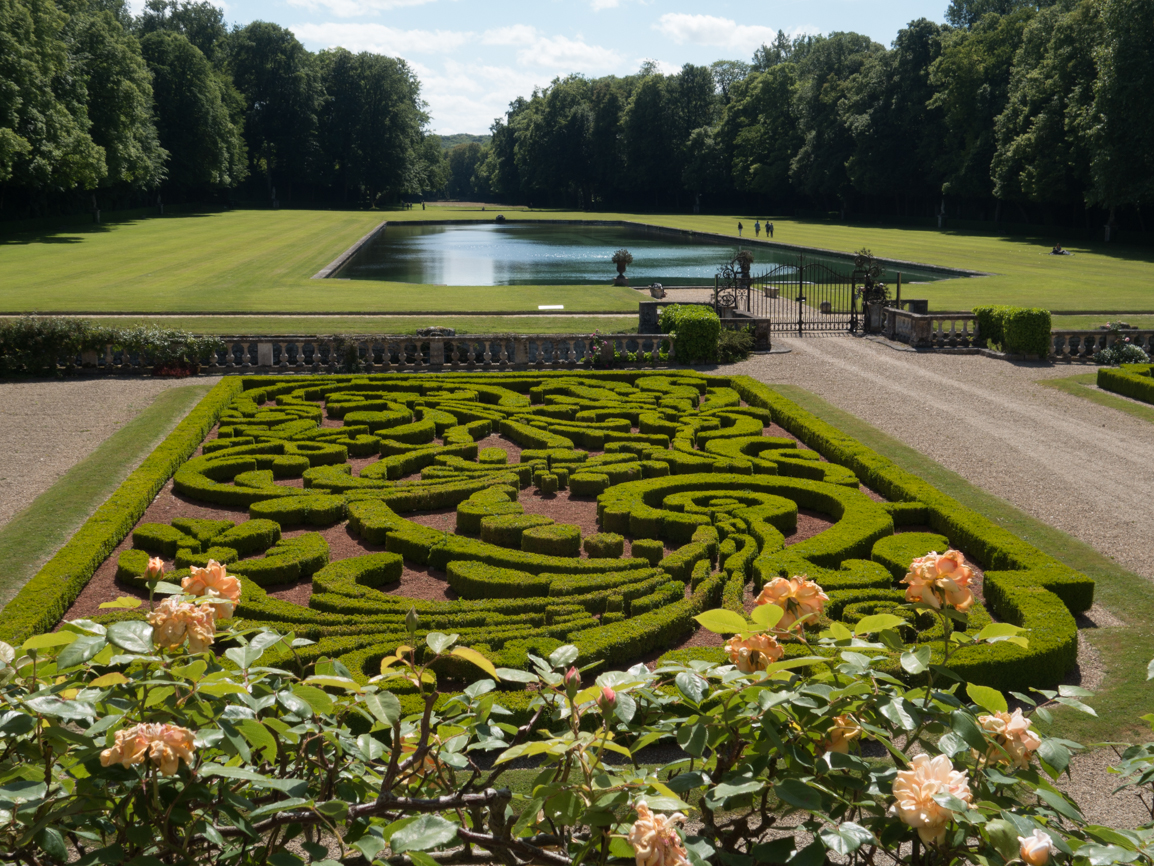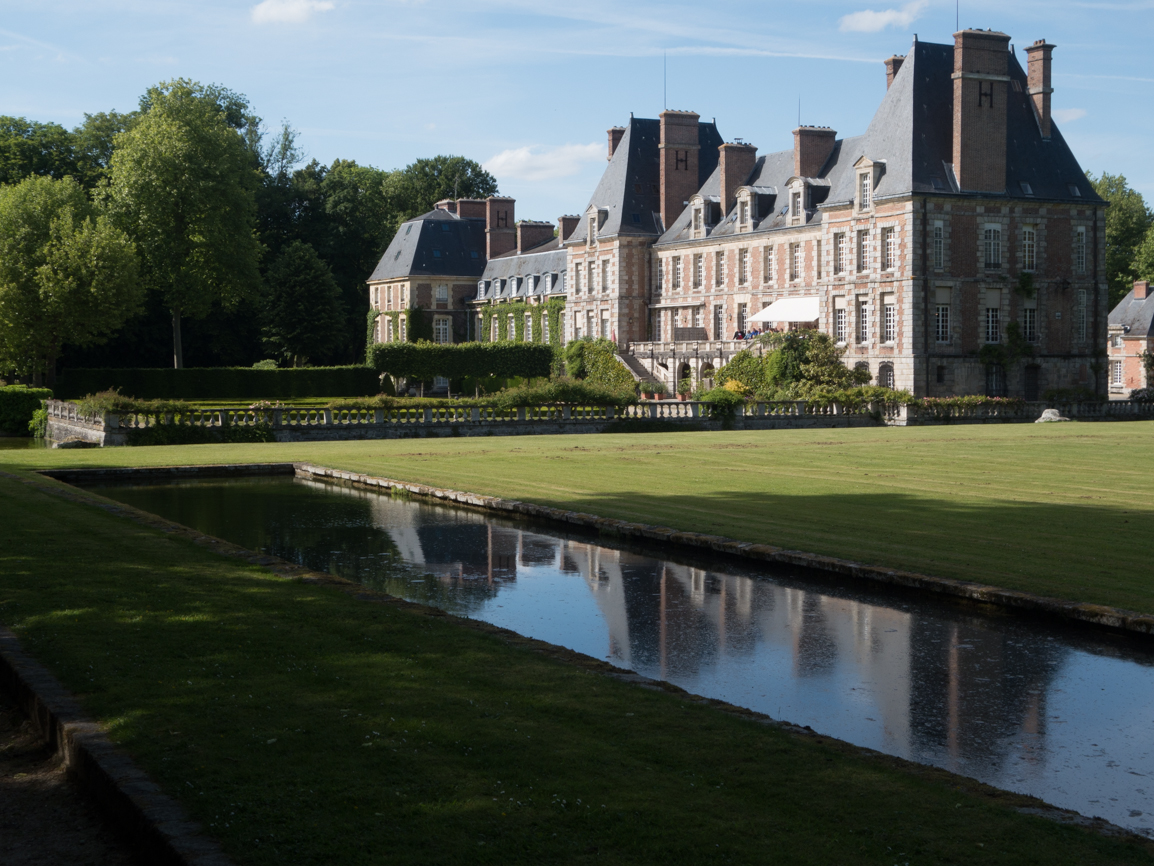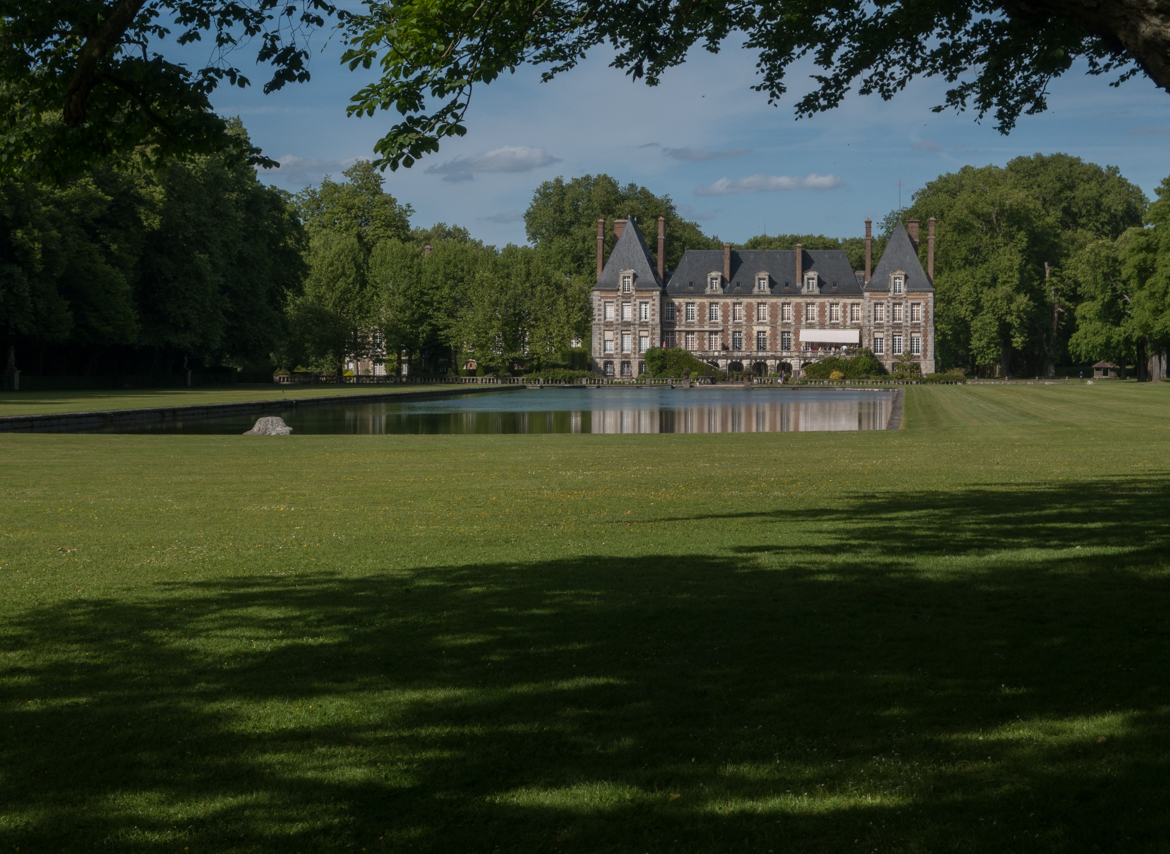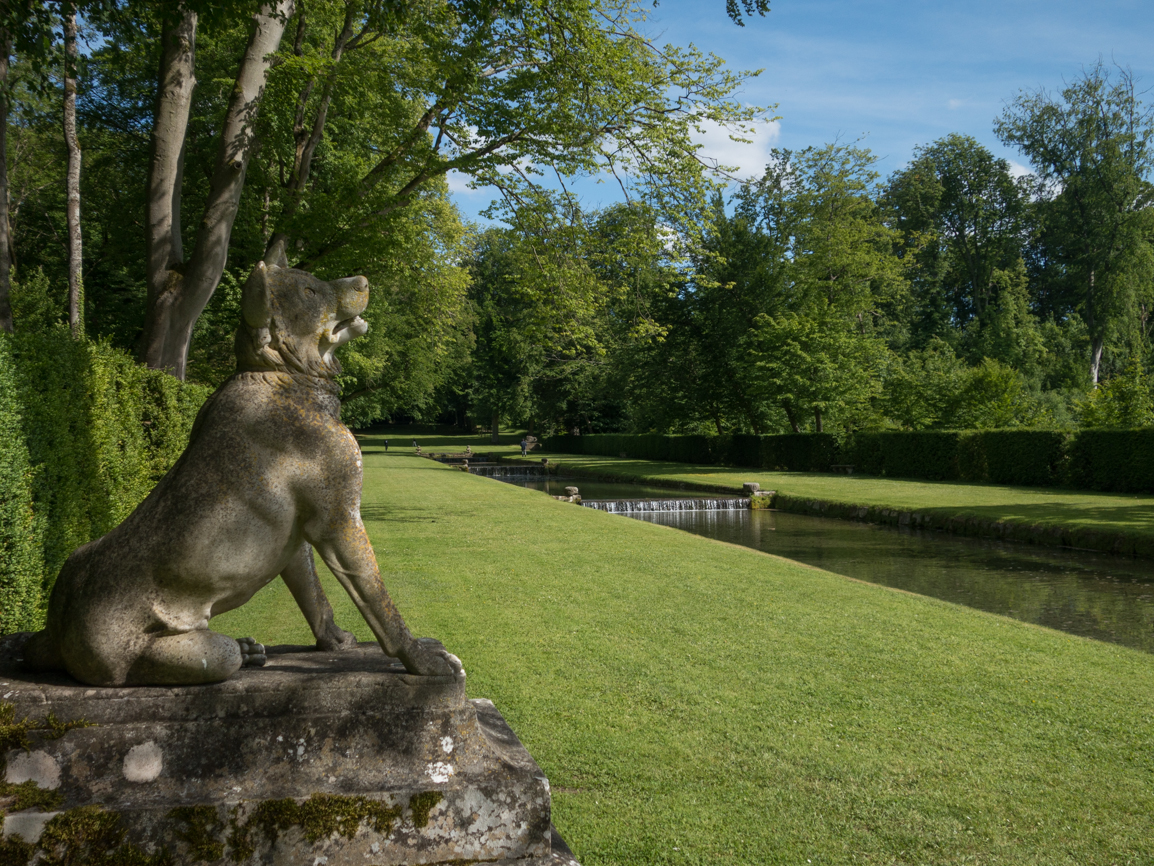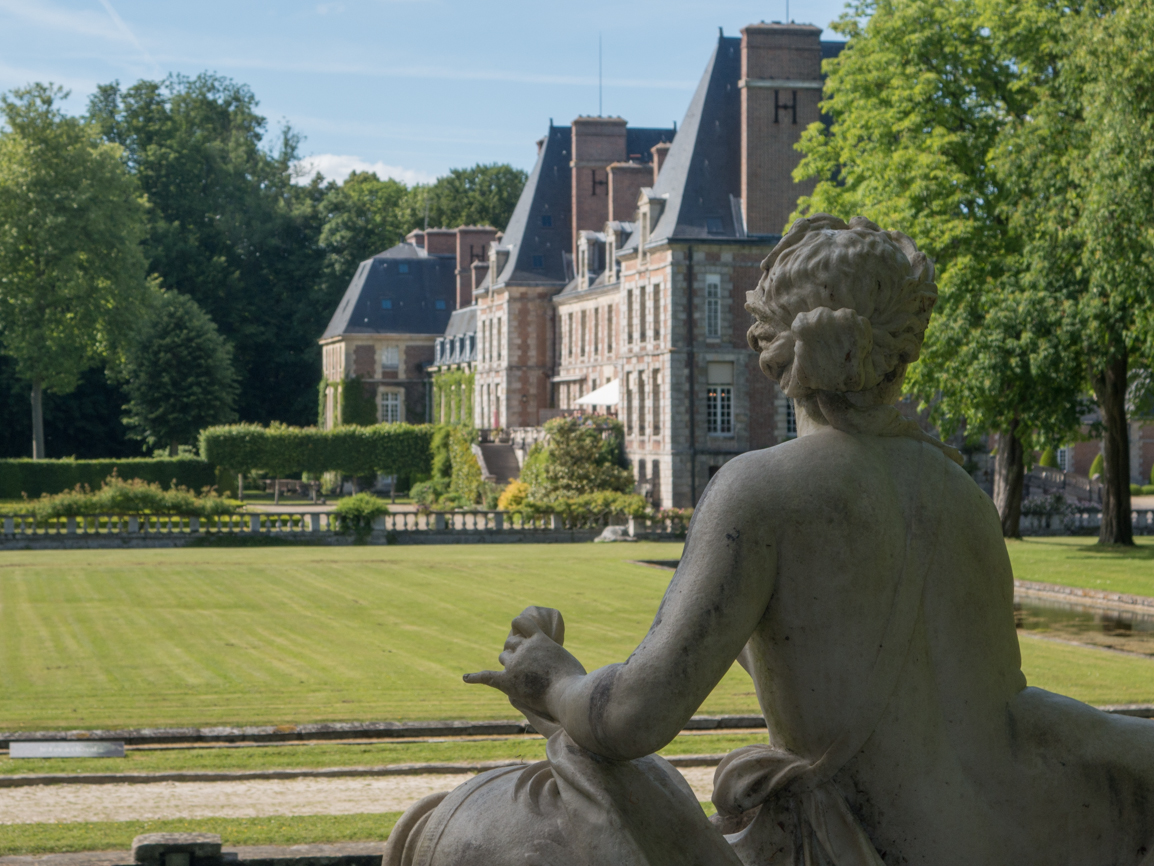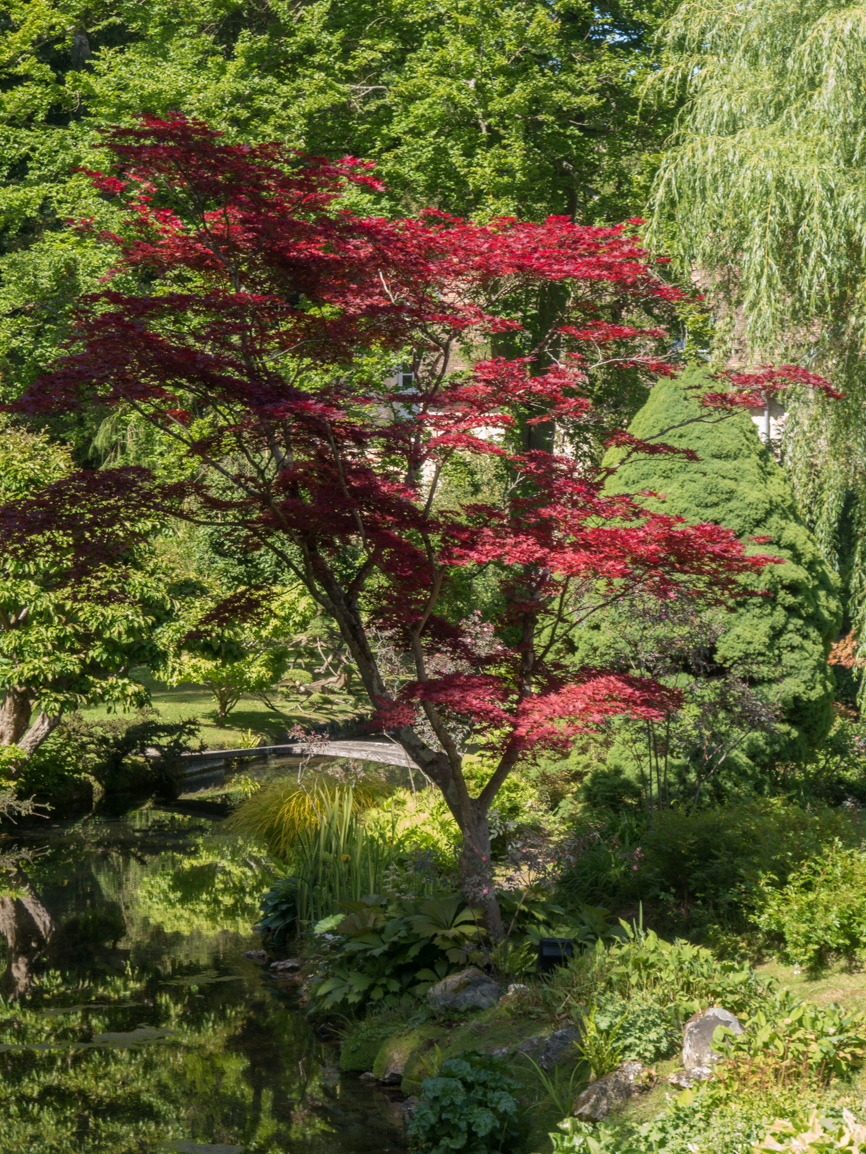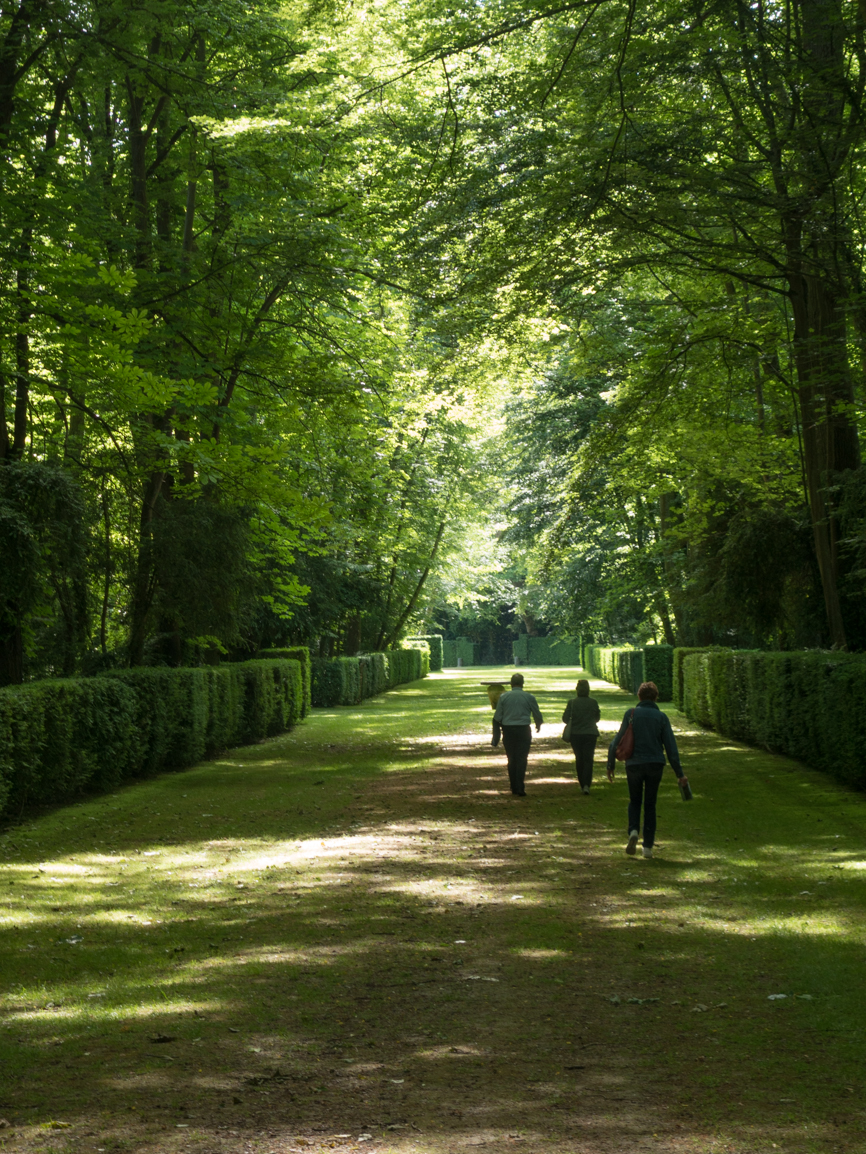Château Courances
France has a lot of châteaux - a LOT of châteaux. Although the best known are in the Loire Valley, there are beautiful châteaux everywhere around us; yesterday we visited Courances, a Renaissance château best known for its beautiful water garden park.
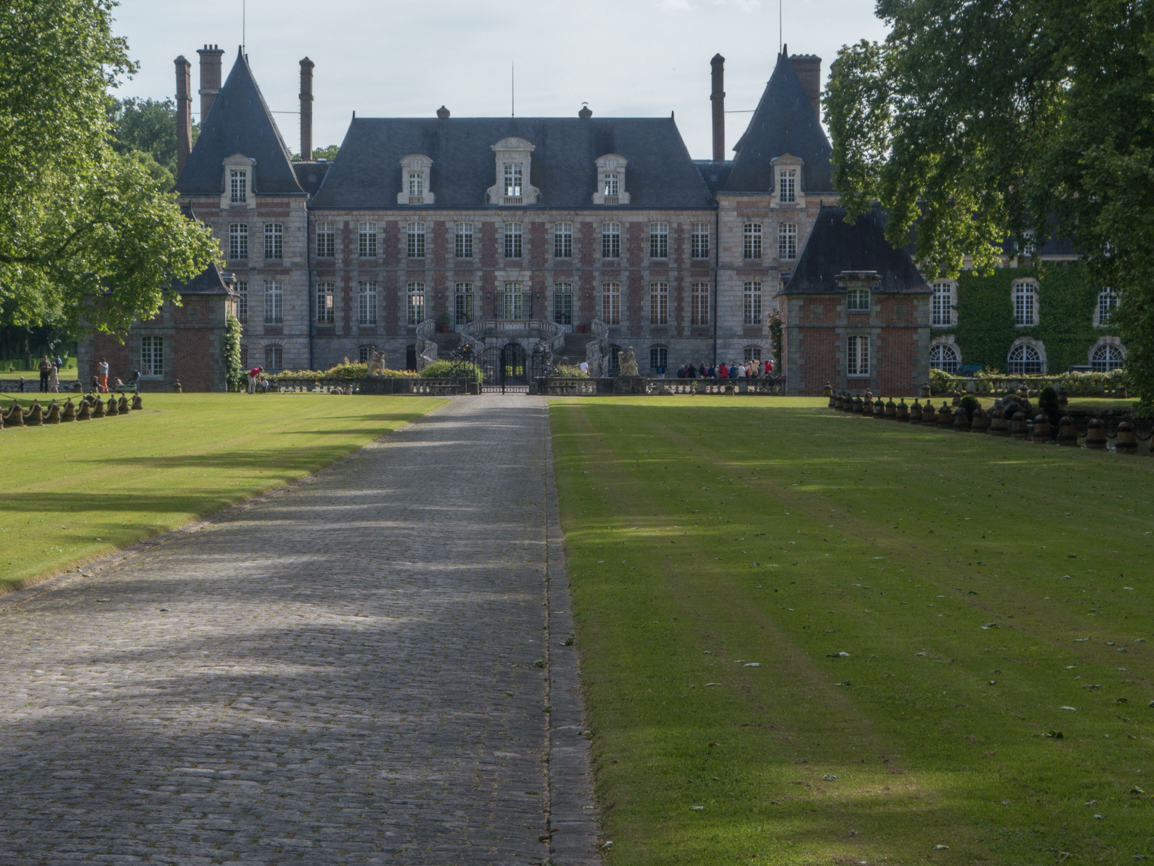
This château has quite a history. The Gallard family took over the property (175 acres, with a rustic house on it) in 1622 and soon had the château built and the gardens started. However, the family was trying to impress people with how much money it had by building and running both Courances and a hotel particulier (a huge private mansion) in Paris and went bankrupt doing it; evidently they didn’t have quite enough money. The château then was auctioned off to a junior line of the family and, through a marriage, came to the Nicolay family in the mid-1700s. The Nicolays made more changes to the garden, but lost Courances (and their heads) in the French Revolution (1789-1795). The remaining Nicolay fled and, in 1830, gave up trying to maintain the château from exile.
Courances sat empty and the park untended for the next 40 years. In 1872, Baron de Haber bought it and started rehabbing it. At that time it was a mess - there was even a tree growing in the dining room. The good Baron wanted the château to solidify his standing as a French aristocrat; he was a German banker but an aristocrat wanna-be. His descendents still live in it.
Throughout its history, owners have spent a huge amount of time and money on the garden. A lot of money. The Baron was no exception; under his management the entire château and park were completely renovated from their untended-for-forty-years condition to what we see today. I might point out that his family lives here only sometimes, splitting its time between the five or six other châteaux they own and their hotel particulier (translated: huge private mansion) in Paris.
The water garden of Courances sets it above many other château in France; the house itself is beautiful but not extraordinary. The gardens, with many ponds and lakes and canals created by the many owners over a period of five centuries, are extraordinary, as you can see:
